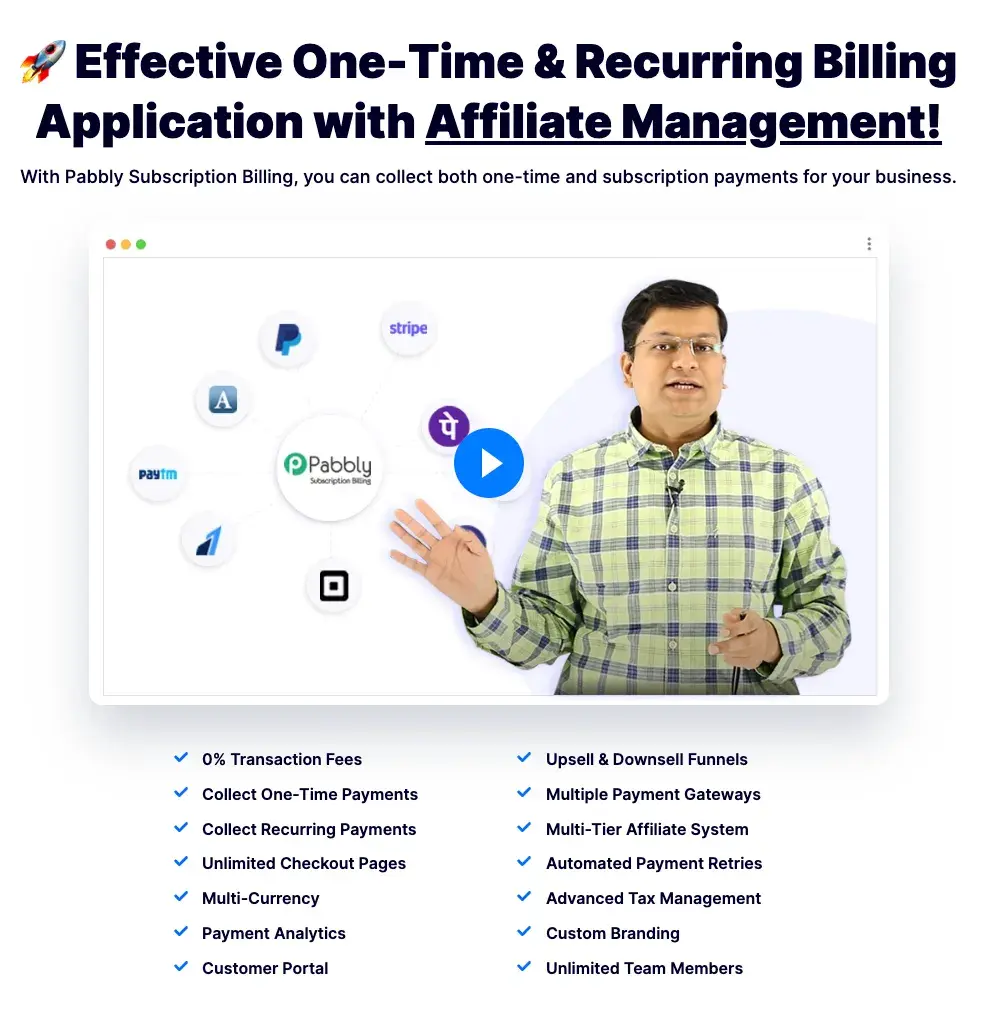If you’re a small business owner, I’m sure you’ll agree that your company's financial health is your top priority. And with that comes the need for accurate and agile accounting for your business.

But with so many accounting solutions available, how do you find the best accounting software for you? To help you make that decision, I've compiled a list of the leading accounting software currently on the market. I recommend reviewing these accounting software examples, their key features, and the pricing options, to inform your decision-making.
Best Accounting Software for Small Business
- Intuit QuickBooks
- FreshBooks
- Melio
- Pabbly
- Wave
- Clockify
- Sage 50cloud
- Xero
- Zoho Books
- Kashoo
- AccountEdge Pro
- OneUp
- Tipalti
- OnPay
- NetSuite ERP
- Accounting Seed
- ZipBooks
- Holded
- Cin7
- ZarMoney
- Warp
1. Intuit QuickBooks

Intuit QuickBooks might be the first resource that comes to mind when you hear the term “small business accounting software” — and for good reason. Beyond its first-rate suite of capabilities, the program sets itself apart with elements like receipt capture and 24/7 chat support.
QuickBooks is also playing a part in integrating AI into the field of accounting — a booming market — by launching their AI-powered accounting assistant Intuit Assist. This virtual assistant provides personalized financial insights to build action plans for growth.
In addition to AI in accounting software, the importance of AI sales tools cannot be underestimated in the quest for growing your business. Manual tasks such as data entry are automated and data-driven insights help in sales forecasting.
Best for: Businesses looking for a tried-and-true option.
What I like about QuickBooks:
- It’s fairly easy to set up and use.
- It allows custom invoices, ensuring that the company’s brand is always front and center in all interactions with clients.
- The software allows automation of accounts payable and receivable, which helps organize things better.
- With the QuickBooks online account, a mobile application is also included so I can view my accounting on the go.
- I can sort expenses easily by creating custom rules.
- It offers over 700 app integrations, including PayPal, Shopify, and Square, which allows me to meet all my customized needs.
What I think QuickBooks can improve on:
- The number of users is limited for each software plan.
Intuit QuickBooks pricing: Starts at $15.00/month
All plans allow you to track income and expenses, send invoices and receive payments, run reports, send estimates, track sales and taxes, and capture and organize receipts. More advanced plans allow you to track inventory, track time, and even run full-service payroll.
Pro tip: Before paying the subscription fee, I recommend doing a test drive of the software by creating an invoice on QuickBooks Online.
2. FreshBooks

FreshBooks is a straightforward solution that prides itself on making small business accounting more efficient. The platform integrates with many business applications and provides you with a single dashboard to manage your finances and accounting.
With FreshBooks, expenses can be categorized by creating budget spreadsheets. If you are new to creating budgets, I suggest starting out by reviewing budget templates. To do a test run of punching your numbers, the personal budget template is the best place to start.
If you send out recurring invoices, need time-tracking capability, or run a subscription model business, FreshBooks could be ideal for you. Its suite of resources lends itself to companies that fit that bill.
Best for: Businesses that send out recurring invoices or have subscription models.
What I like about FreshBooks:
- Its user-friendliness makes it best suited for small businesses.
- It’s great for freelancing as tracking time is easy in the software.
- It has a direct invoicing integration.
- Regular secure backups and a mobile app help you keep track of your business at all times.
- It includes a feature that lets you see when a customer opened your invoice — letting you avoid those pesky “I never got it” excuses.
What I think FreshBooks can improve on:
- Its inventory functionality is currently limited.
- You can only invoice a limited number of clients.
FreshBooks pricing: Starts at $7.60/month
Pro tip: Opt for an annual subscription to get a 10% discount.
3. Melio

Melio is an online business-to-business payment solution. It‘s made for businesses of all sizes to pay and get paid their way — by ACH, check, or credit card. Melio has no subscription or monthly fees, and while it’s mostly free to use, some transactions do carry a small charge.
Best for: Businesses looking for a free business bill pay solution.
For businesses, cash flow is everything and that's why Melio lets them pay their business bills with a credit card, to defer payment, earn rewards, and hang onto their cash. Additionally, payments are synced to QuickBooks Online, which means they stay in sync with their accountant or bookkeeper.
What I like about Melio:
- It provides a streamlined, efficient solution for handling business transactions.
- Its dashboard provides detailed insights into your payment activity, so I’m able to track payments, view upcoming bills, and monitor cash flow.
- The navigation is smooth and responsive, making it easy to find what I’m looking for.
- I can use the mobile app to manage payments on-the-go.
- I can easily download payment data, which is useful for creating reports or doing detailed analyses.
What I think Melio can improve on:
- Offering a complete set of accounting tools/features.
- Offering international payments in multiple currencies.
Melio pricing: Starting price is free, and it includes features such as unlimited users, approval workflows, bill capture, payment tracking and updates, bill management, custom payment requests, and more.
.png)
Free Business Budget Templates
Manage your business, personal, and program spend on an annual, quarterly, and monthly basis.
- Personal Budget Template
- Annual Budget Template
- Program Budget Template
- And more!
Download Free
All fields are required.
.png)
4. Pabbly

Pabbly Subscription Billing is a recurring and subscription management software for small to medium-sized businesses. This software provides real-time actionable metrics on your monthly payments, revenue, net revenue, active customers, and new subscriptions. It also automates all your business workflows, customer communication, and invoice creation so you can focus on your business growth.
Best for: Businesses looking for a reliably fixed pricing model.
One of Pabbly‘s key selling points is its subscription billing model. It’s one of the only software on this list that doesn't charge any extra fees on the basis of per-transaction and monthly revenue generation. That kind of consistency — paired with its first-rate functionality — make Pabbly a solid option.
What I like about Pabbly:
- I can easily connect multiple applications to automate tasks.
- I can also create unlimited workflows with its one-time payment plan.
Pabbly pricing: Starts at $9/month
5. Wave

Wave is a powerful accounting solution for small businesses and individual contractors. It places significant emphasis on ease of use and synchronicity — letting you link your bank accounts, track your expenses, and balance your books without any trouble. It also lines up with Wave's additional resources, providing you with an all-in-one solution if you opt to invest in its other products.
Best for: Freelancers or very small businesses.
In my opinion, if you are operating as a freelancer or have just a few employees, Wave could be for you. Most of its services are free, including invoice and transaction management. However, if you’re looking for built-in time tracking, inventory tracking, or project management, you’ll likely need different software.
What I like about Wave:
- After making payments with my credit card, I can easily categorize everything with just a few clicks.
- It’s easy to set up and use.
- It generates reports smoothly, providing clear insights into finances.
What I think Wave can improve on:
- There are no advanced features like time tracking and inventory management.
- If you are on their free plan, you have limited support from their help center.
- It is not scalable as it does not offer multiple plans to increase the software’s functionality.
Wave pricing: Free, but with additional monthly costs for some add-ons.
In short, it is great for small businesses on a budget.
6. Clockify

Clockify is known for its time tracker software, but the app excels at many other functions, including tracking billable hours, setting hourly rates, and generating reports or invoices. The software is available on all platforms including Windows, Mac, Android, iOS, Linux, and Web browsers.
Clockify is suitable for both large and small accounting businesses and is mostly used for tracking work hours and expenses. Managing time and tasks as well as tracking activity across shared devices is what Clockify excels at.
Best for: Tracking billable hours and issuing invoices.
What I like about Clockify:
- It streamlines time analysis and timesheet collection.
- I can check how much time each project takes and decide if the compensation is adequate.
- I can track attendance through the management features and have a look at what team members are working on.
- Setting personalized rates for tasks, projects, and employees.
- Noting and tracking billable/non-billable hours and expenses, as well as generating and exporting reports, is incredibly easy and intuitive.
- The private cloud option gives maximum privacy and security.
What I think Clockify can improve on:
- The mobile application has some glitches that affect its functionality.
- The offline mode is a bit unreliable, so it can lead to a loss in working hours.
Clockify Pricing: Free standard subscription with upgrades starts at $5.49/month.
7. Sage 50cloud

Sage is another example of an accounting software that helps you spend less time on administrative tasks. The software sends invoices, tracks payments and expenses, and calculates what you owe come tax season. Time-tracking and collaboration tools are two things you won’t get with Sage, and payroll is a separate product.
Best for: Small businesses trending towards higher growth.
What I like about Sage50cloud:
- The program's design is user-friendly. Small business owners who are not financially savvy can use it without a steep learning curve.
- Their customer service is excellent.
Sage50cloud Pricing: Starts at $60.08/month
Sage50cloud is the most expensive tool on this list, but it has an impressive enough suite of features to justify its price.
8. Xero

Xero lets you get financial performance reports sent straight to you, and connect your bank account for a seamless experience. One of Xero's most impressive characteristics is its mobile experience, making it an excellent option for business people who work on the go. The software allows you to send custom invoices, track inventory, and create purchase orders to attach to bills — all from your phone or tablet.
Best for: Businesses that conduct their business on the go.
What I like about Xero:
- It's easy to use for people who are new to accounting software.
- It has a wide range of integrations and an app marketplace.
What I think Xero can improve on:
- Live support.
- Xero introduces new features far too often. Making dramatic changes can affect ease of use.
- Introducing payroll features so that integration with payroll applications isn't necessary.
Xero pricing: Starts at $3.75/month
9. Zoho Books

Zoho Books is an excellent resource for helping your small business manage cash flow and finances. The software lets you automate workflows and work collectively across departments. It includes first-rate tools for inventory management, banking, time tracking, and financial reporting — all backed by an industry-leading UX.
What I like about Zoho Books:
- It is good for small businesses and for entrepreneurs.
- It comes with a user-friendly, easy-to-read dashboard that virtually any member of your organization can make sense of.
- You can easily analyze cash flow, total receivables and payables etc., via the dashboard.
- It offers benefits like excellent customer support and the ability to accept payments online.
What I think Zoho Books can improve on:
- The user interface is overwhelming, which would be particularly unfavorable for new users.
Zoho Books pricing: Starts at $15/month
10. Kashoo

Kashoo is a solution that offers powerful functionality at a reasonable price. Among the software's features are automatic reconciliation, categorization using machine learning technology, and income and expense tracking.
Best for: Businesses looking for a simple solution.
What I like about Kashoo:
- Helpful tech support.
- Its functionality is straightforward and effective.
- I can easily see what I owe and what I’m owed.
- It offers plans and features that can accommodate any small business's needs.
- Its pricing structure allows for unlimited users at a relatively low price point.
- Reviewing the profit and loss statement, balance sheet, supplier and customer statements is straightforward.
What I think Kashoo can improve on:
- Issuing invoices to customers from the mobile application.
- Fixing the mobile screen layout to avoid it getting frozen.
Kashoo pricing: Starts at $216/year
11. AccountEdge Pro

AccountEdge Pro provides double-entry accounting tools — from time billing and reporting to inventory — that are customizable and optimized for desktop users. The program is also available for a one-time fee, potentially saving you a lot of money down the line by avoiding subscription costs.
Best for: Businesses that don't necessarily need a mobile option.
If a lack of a mobile option isn’t a deal-breaker for you, AccountEdge could be just what you need. As I mentioned, the software is designed specifically for desktop users — and that experience is extremely solid — but you can‘t take AccountEdge with you on the go. That said, there’s a cloud collaboration option available for purchase that gives you mobile flexibility.
AccountEdge Pro pricing: Starts at $20/month
12. OneUp

OneUp is another double-entry accounting solution. It syncs with your bank, categorizes bank entries, and validates suggested entries so your books are done quickly and accurately. All told, those elements amount to roughly 95% automation of your accounting.
OneUp might be best known for its inventory management capabilities. The program automatically adjusts your inventory levels as they shift and tells you when to reorder.
Best for: Businesses focused on inventory management.
OneUp pricing: Starts at $9/month
13. Tipalti

Tipalti automates the accounts payable process, allowing you to focus on other aspects of your business. The solution can streamline international payment processing in around 190 countries, automate your payment operations, and even make sure you’re tax compliant.
Best for: Deadline-driven businesses.
Tipalti is perfect for deadline-driven businesses. It can help you keep tabs on and meet time-bound payment objectives every time. Late payments, non-compliance, and administrative overload are all issues the program aims to correct. I like Tipalti as a solution as it helps keep the accounts payable process straightforward and timely.
Tipalti pricing: Starts at 129/month
14. OnPay

OnPay can help you automate tax filings, enter payment data, and manage benefits including compensation insurance, health insurance, and 401(k). It also offers unlimited payroll runs for W-2 and 1099 workers.
And, OnPay can estimate your payroll taxes, manage tax form filings, and even pay your taxes. A bonus here? They’ll also take responsibility for any tax filing errors committed while using the product.
Best for: Businesses looking for a payroll-centric solution.
OnPay‘s area of expertise is reflected in its name. If you’re a small- to medium-sized business that needs help streamlining payroll and entering payment data, you might consider investing in OnPay. I’m not saying the rest of its features aren’t impressive — it's just to say that the solution fits businesses interested in a payroll-centric solution particularly well.
OnPay pricing: Starts at $40/month plus an additional $6/user
15. NetSuite ERP

NetSuite's Enterprise Resource Planning (ERP) product helps small businesses with functions like financial management and planning, order management, supply chain, fulfillment, and procurement — integrating these functions into a single streamlined system.
Best for: Businesses anticipating rapid growth.
NetSuite prides itself on growing with businesses “from pre-revenue through IPO and beyond” — with functionality that can assist you at every stage of your business as it scales and matures.
I personally like NetSuite ERP because it's an all-in-one software with a wide array of features such as accounts receivables, account payables, cash management, close management, fixed assets management, and payment management.
NetSuite ERP pricing: Available upon request
16. Accounting Seed

Accounting Seed offers subscription or recurring billing options, has a secure and reliable API, and works with your company to link critical business applications and bank accounts for real visibility into the financial state of your business. And it automates many of the menial tasks that eat up your day.
Best for: Businesses looking for a solid cloud-based platform.
Accounting Seed is a cloud-based platform that’s fully native to Salesforce, so I like that you can log in anytime, anywhere — giving you a degree of flexibility and mobility. The platform also lends itself to easy collaboration, offering data visibility to any stakeholders at your business.
Accounting Seed pricing: Available Upon Request
17. ZipBooks

With ZipBooks, you get invoicing and billing features such as auto-billing and payment reminders to decrease your admin work. I like ZipBooks because of its intelligence features such as business health score, invoice quality score, and smart search that help make data-driven decisions about finances.
Best for: Users looking for an exceptional UX.
One of ZipBooks' biggest draws is its best-in-class user experience. Its straightforward, color-coded interface offers accessibility without sacrificing powerful functionality. If your business is looking for a solution that gets the job done without being overly elaborate, I would suggest ZipBooks.
ZipBooks Pricing: Free with more robust features starting at $15/month
18. Holded

Holded is a robust solution that offers accounting, invoicing, project, and inventory features — among several others. It lets you connect your bank, reconcile transactions, automatically classify entries, and manage it all in your ledger.
Holded’s suite of features is extensive — covering invoicing, accounting, payroll, project management, and inventory. It also boasts an impressive list of integrations, so this this software can impact your business positively across the board.
Best for: Businesses interested in an all-in-one business management software.
Holded pricing: Holded’s pricing differs depending on your business size. If you are a small company with less than 10 employees, pricing starts from €14.50/month. For medium companies, pricing starts from €49.50/month. For freelancers, pricing starts from €7.50/month.
19. Cin7

Cin7 offers a centralized platform that covers virtually every aspect of your business — from purchasing to warehouse management to job costing. That broad array of tools includes a robust suite of accounting features that can help any small business streamline processes like data entry and syncing invoices.
The platform's accounting element also seamlessly integrates with other applications like Xero and Quickbooks — with additional resources that allow for real-time visibility into your financial data.
Best for: Businesses trying to cover all their bases — not just accounting.
Cin7 pricing: Starts at $349/Month
Cin7 can touch several aspects of your company‘s operations — making for a steeper price tag than most other solutions on this list. If you’re solely in the market for small business accounting software, this one might not be up your alley.
20. ZarMoney

ZarMoney is an all-in-one solution with an impressive list of features. It covers virtually every accounting process your business has to stay on top of — including productivity, advanced inventory, and reporting.
With payment models that can accommodate everyone from individual entrepreneurs to small businesses to large enterprises, you should have no problem finding a plan that works for you.
Best for: Businesses looking for a solution that grows with them.
ZarMoney‘s pricing model operates on a sliding scale that incrementally adjusts with every individual user you need to add at a reasonable price. That structure can work for businesses growing at any rate. If you’re in the market for a solution that will keep pace with you as you scale, check out ZarMoney.
ZarMoney pricing: Starts at $20/month
21. Warp

Warp is a modern payroll, compliance, and benefits platform built for founders. Warp puts all state tax registrations and compliance on autopilot so you never need to login to another .gov website again.
Most payroll solutions give you a wide spectrum of tools you don’t need or use. Warp, on the other hand, is built to automate all payroll, tax compliance, and benefits on a single easy-to-use platform.
Best for: Businesses looking for a solution that manages compliance and benefits in one platform.
Warp pricing: Starts at $20/month
What Accounting and Bookkeeping Software Should You Use?
Due to the number of accounting and bookkeeping software out there, it can get overwhelming to choose the right one. To make the choice simple, I recommend keeping the following things in mind:.
Identify your needs.
Ask yourself, “Do I need a platform that allows me to track inventory, or is receipt-tracking and sales tax more directly important?” I like to ask this question to make a list of my accounting needs and then prioritize them from least to most important.
I believe before researching solutions, it’s important to agree upon a goal number of needs your chosen software will meet. You can be flexible here, but it‘s easy to get distracted by the bells and whistles of a product that solves for 18 needs you don’t have.
Be honest about your budget.
Before embarking on the research phase of the process, it is important to identify how much you can afford to spend on accounting software. Once you know how much money you have budgeted, try not to spend too much time evaluating software that's outside the realm of possibility.
Pro tip: Budgets often have some wiggle room, but I try to make it a rule that if a solution is more than 25% over my set budget, I'll walk away.
Research for features that meet your needs.
It‘s easy to get starry-eyed about features. But if you find yourself considering software that specializes in providing accounting services for global teams — and you only conduct business in the U.S. — you might find yourself paying for a lot you just don’t need.
Try not to get distracted. Return to your list of prioritized needs and evaluate only the software that meets the majority of those needs.
Ask the right questions.
If you're choosing software that requires a sales process, I love these questions to help gauge if the solution is right for you:
- “How secure is your API?”
- “How do you back up system data?”
- “What other costs or fees should I expect?”
- “Tell me about customer support. What are your hours, and how quickly should I expect to get a response if I submit an issue or a question?”
- “Can you tell me about a client you've worked with who is similar to my business? What pain points have they experienced with your software?”
Pick a solution that will grow with you.
“I can't wait to buy more software...” said no one ever. Of course, if your solution isn‘t working for your company, you should find a new one as soon as you can. But you don’t want to have to switch software in six months because you've already outgrown it.
Be realistic about how quickly your business is growing and ask the sales rep you're working with how well their product grows with clients as their businesses scale.
Leaving your accounting to chance — or an intern — is never something you want to do. Invest in the right software early on, and know when it’s time to upgrade, outsource, or find a solution that better fits your company’s needs as you grow.
Editor's note: This post was originally published in April 2020 and has been updated for comprehensiveness.
.png)
Free Business Budget Templates
Manage your business, personal, and program spend on an annual, quarterly, and monthly basis.
- Personal Budget Template
- Annual Budget Template
- Program Budget Template
- And more!
Download Free
All fields are required.
.png)




![Entrepreneurship vs. Employment: The Pros & Cons That 200+ Owners & I Weighed [Data]](https://www.hubspot.com/hubfs/pros-and-cons-entrepreneurship.png)
![How to Build A Winning Hair Brand in 2024 [+ Hair Care Trends]](https://www.hubspot.com/hubfs/Copy%20of%20Featured%20Image%20Template%20Backgrounds%20%2840%29.png)




